Final Design
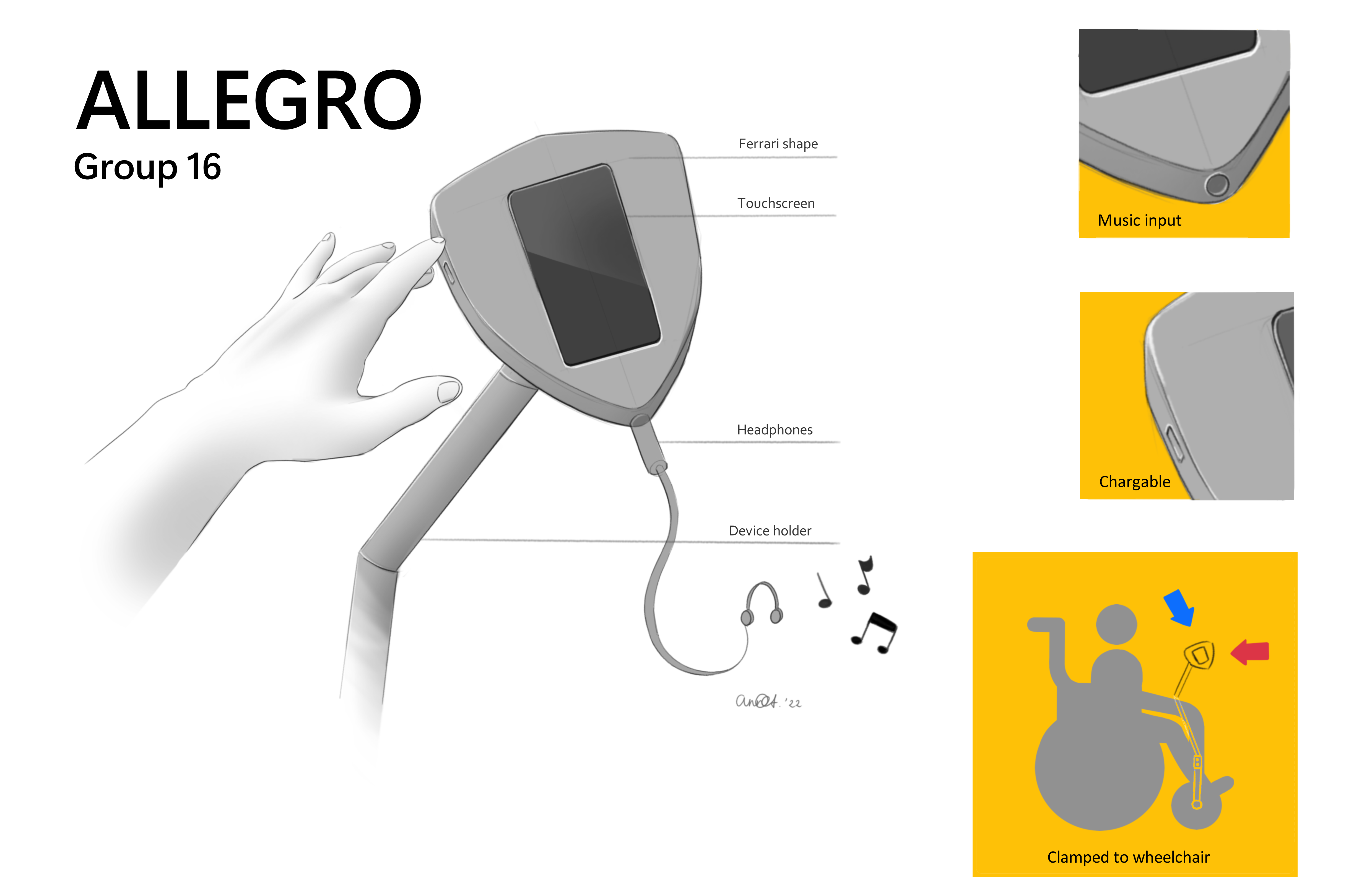
This product is a custom-made, electronic device that is meant to be used for listening to music and calling specific contacts in case of emergency. It can be clamped to a wheelchair which allows the user to operate the device hands-free.
This concept board shows the Allegro in its prototype format. The final design is an improved version of concept 2, which is a device that can attached to the user’s wheelchair. As explained in the image, the product can be used to listen to music. Next to that, the user can call a few emergency-contacts.
This top view of the render shows the final version of the product. It has a big on/off button so the user can easily hit it. In addition, the buttons are rather large and simply displayed. The large hole on the bottom of the product allows for audio input, in the participant’s case it is a headphone.
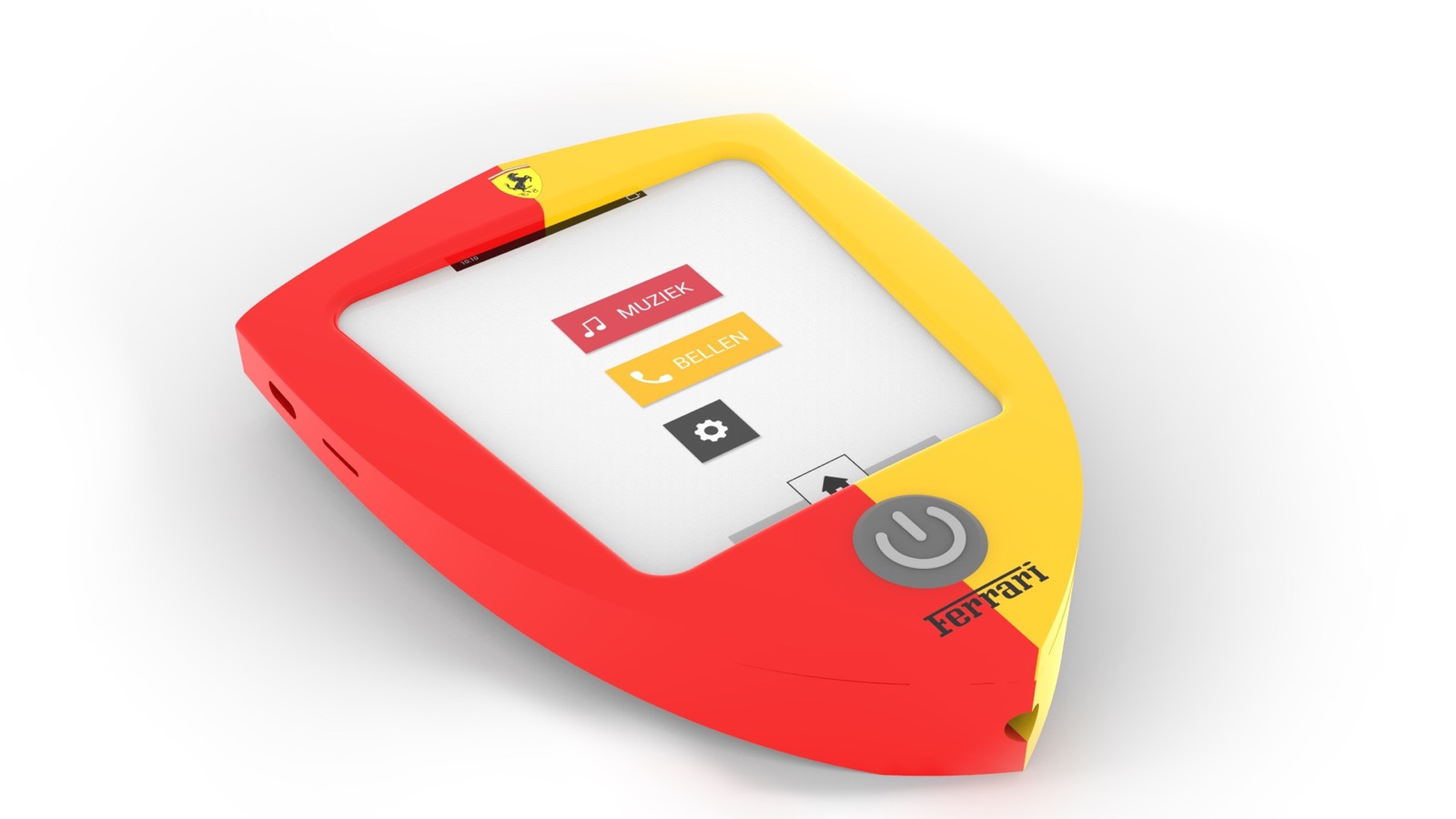
These side views show the other two places for inputs in the design. The left hole ensures the product can be charged, while the right one can be used for connecting an SD-card.
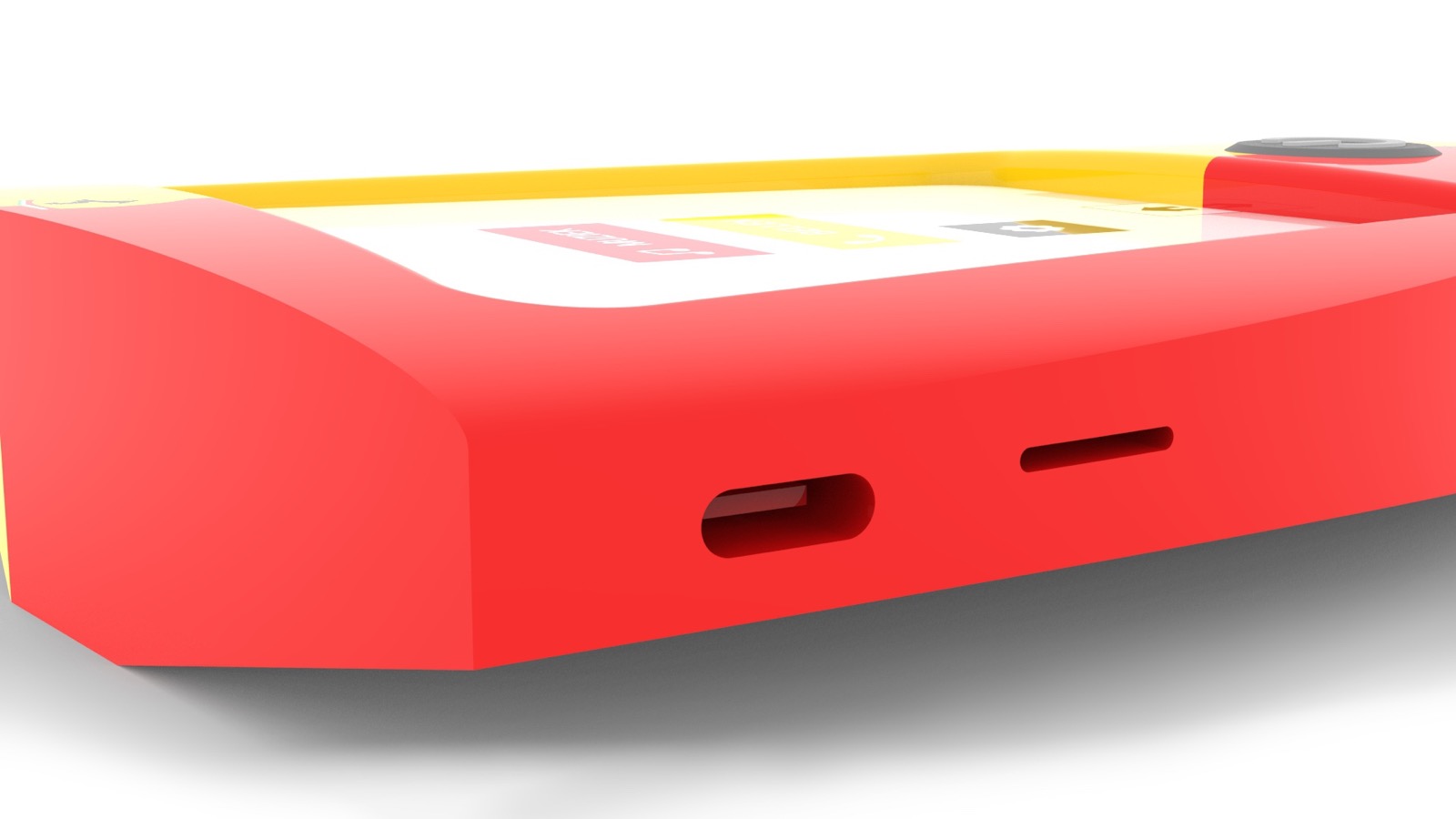
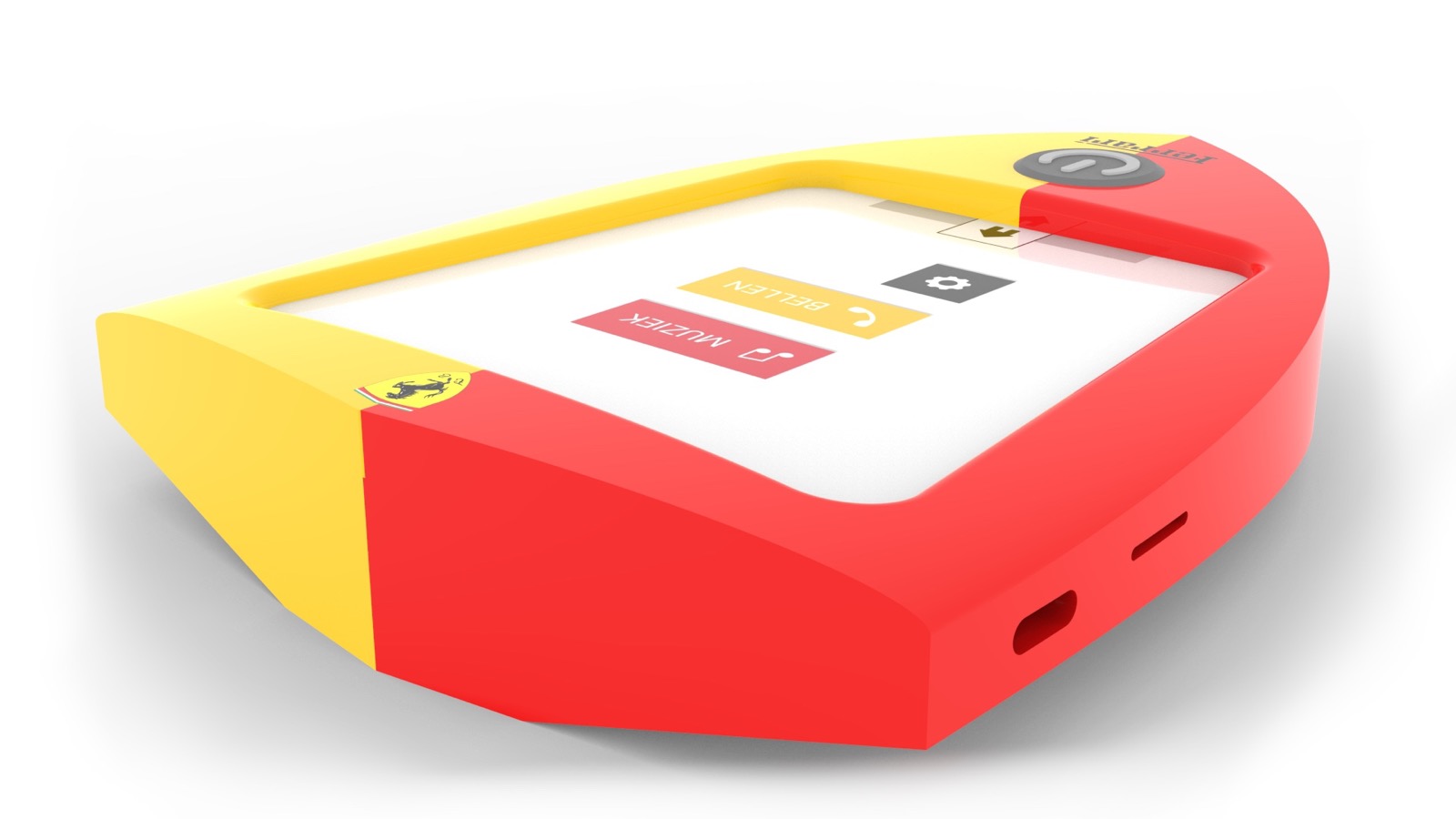
Final sketch
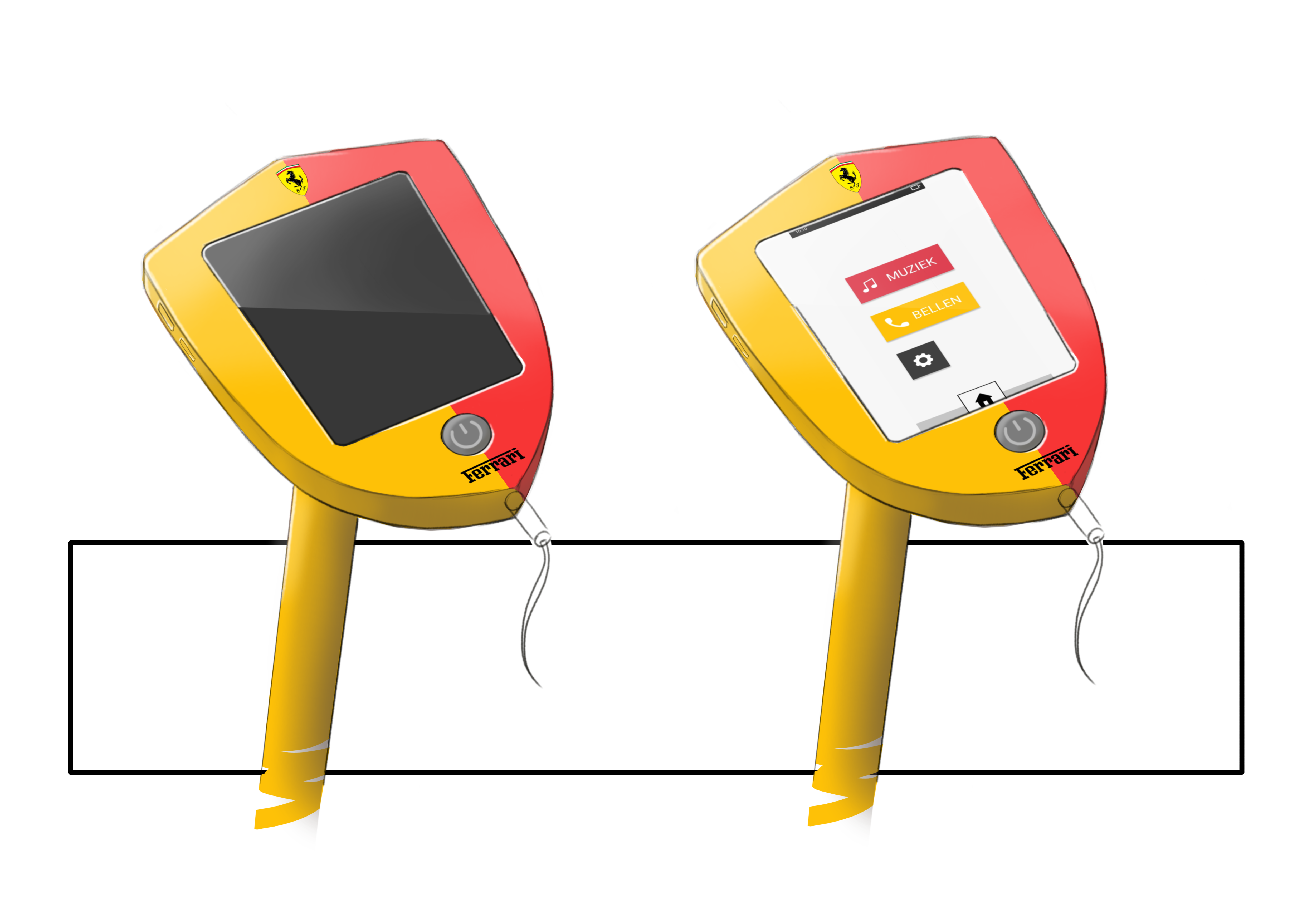
Interface
On the big touchscreen the user can interact with the interface. There are two application and settings. The two apps are the music player and the phonebook. The music player is the app were the player can play music, create playlist and search for song by artist and favorites. An interactive interface can be seen in the phone screen.
User interaction
The device is mounted on the wheelchair so the user has handfree access to the touchscreen and can interact with the interface.
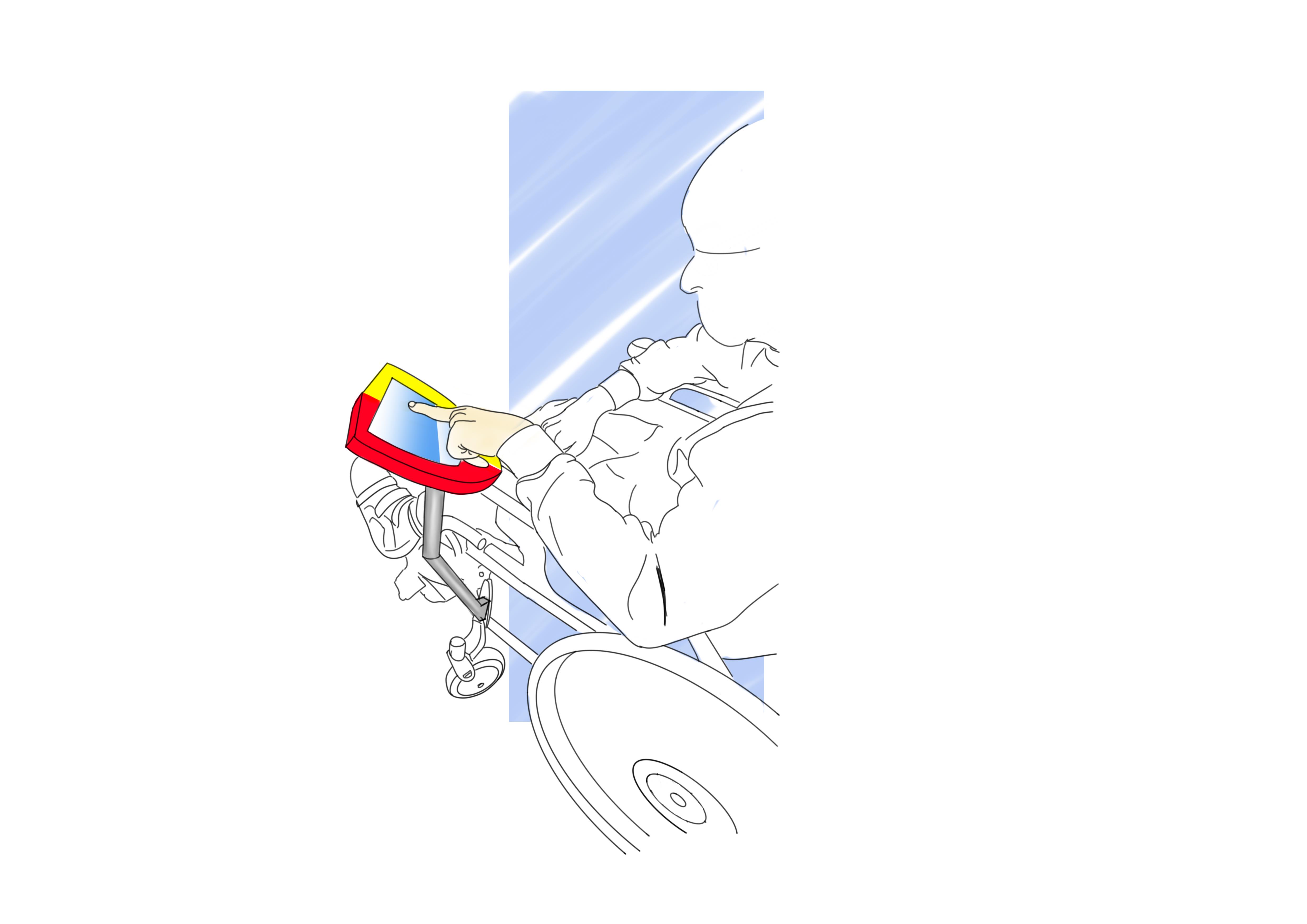
Mechanism
The mechanism of the device is shown in these images. The pole can move and rotate, so it can be positioned in a more ergonomic way. With two simple screws, it can be attached to the wheelchair.
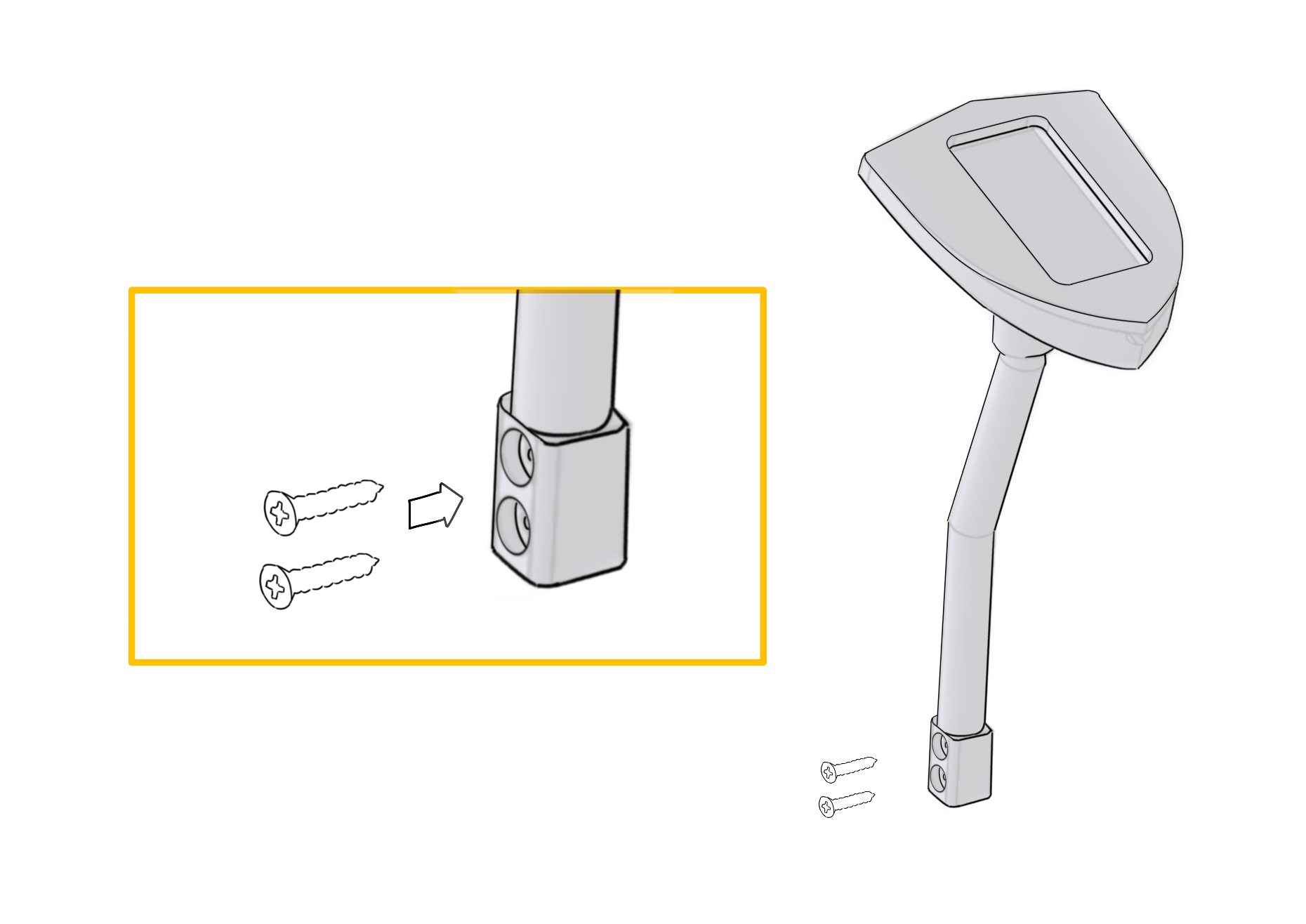
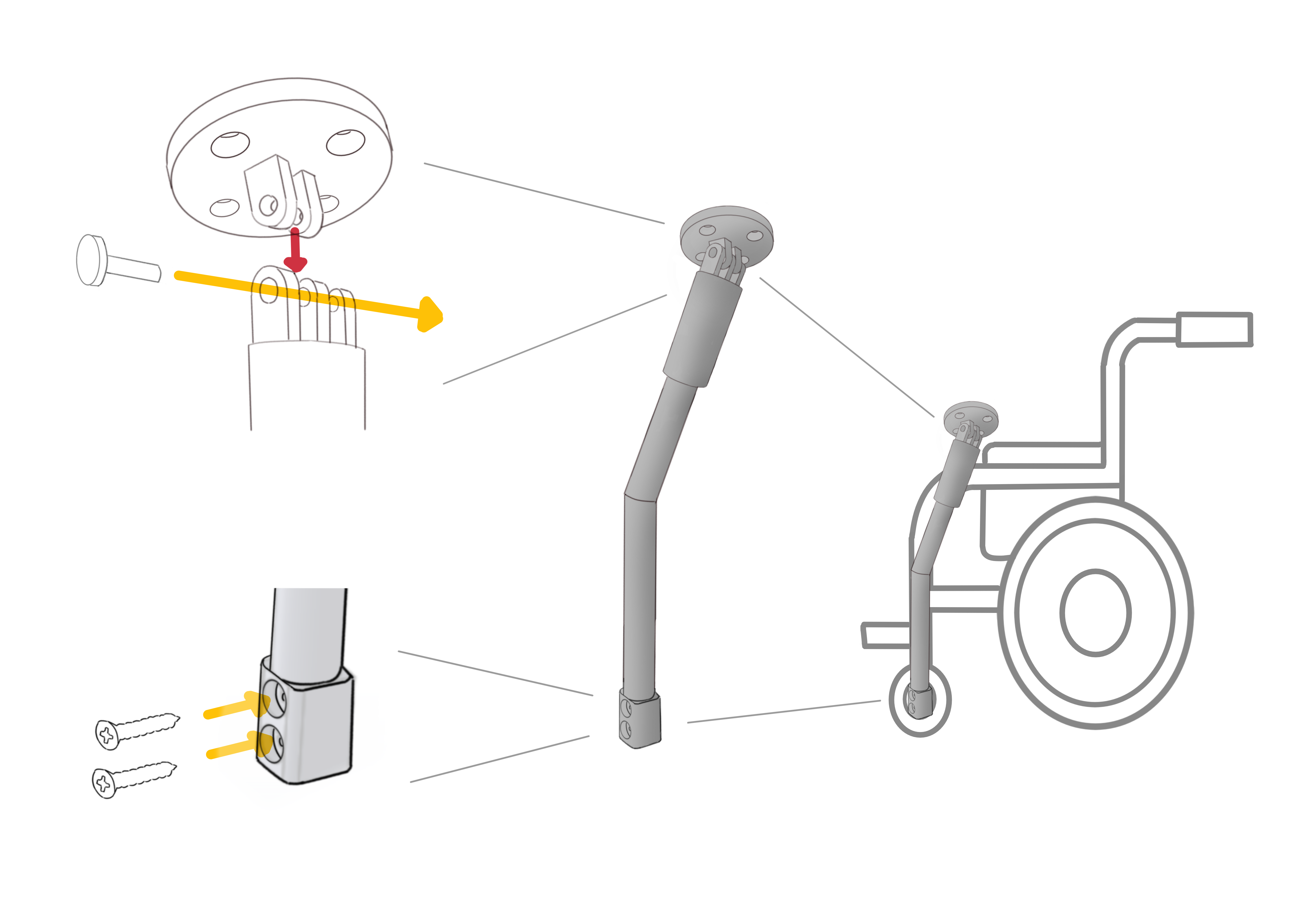
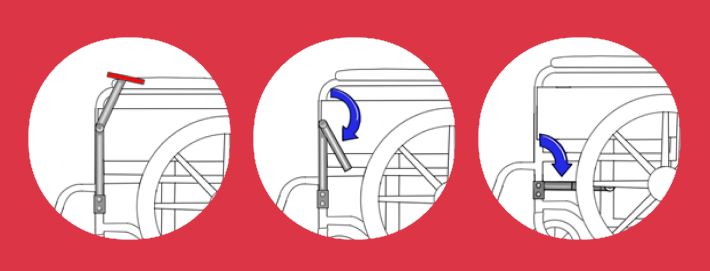
Design Details
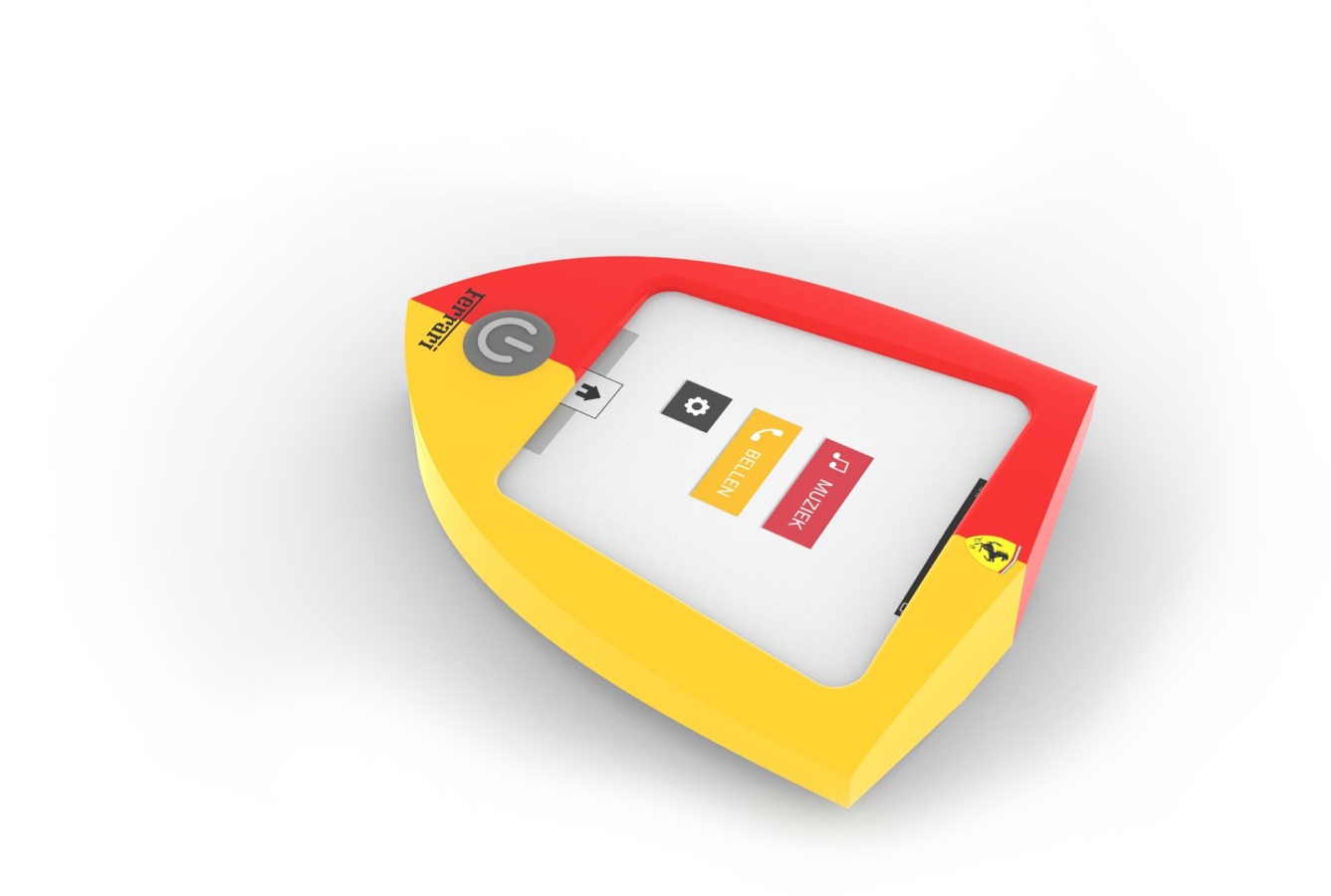
The participant in this co-design strongly addressed their love for the brand Ferrari and its aesthetic. They like the style and colours, and during one of the co-design sessions, they chose these particular colours for the design of the product. The logo is implemented into the design twice: in the overall shape of the product and in the upper corner of the shape. Furthermore, the name is put onto the design.
Prototype
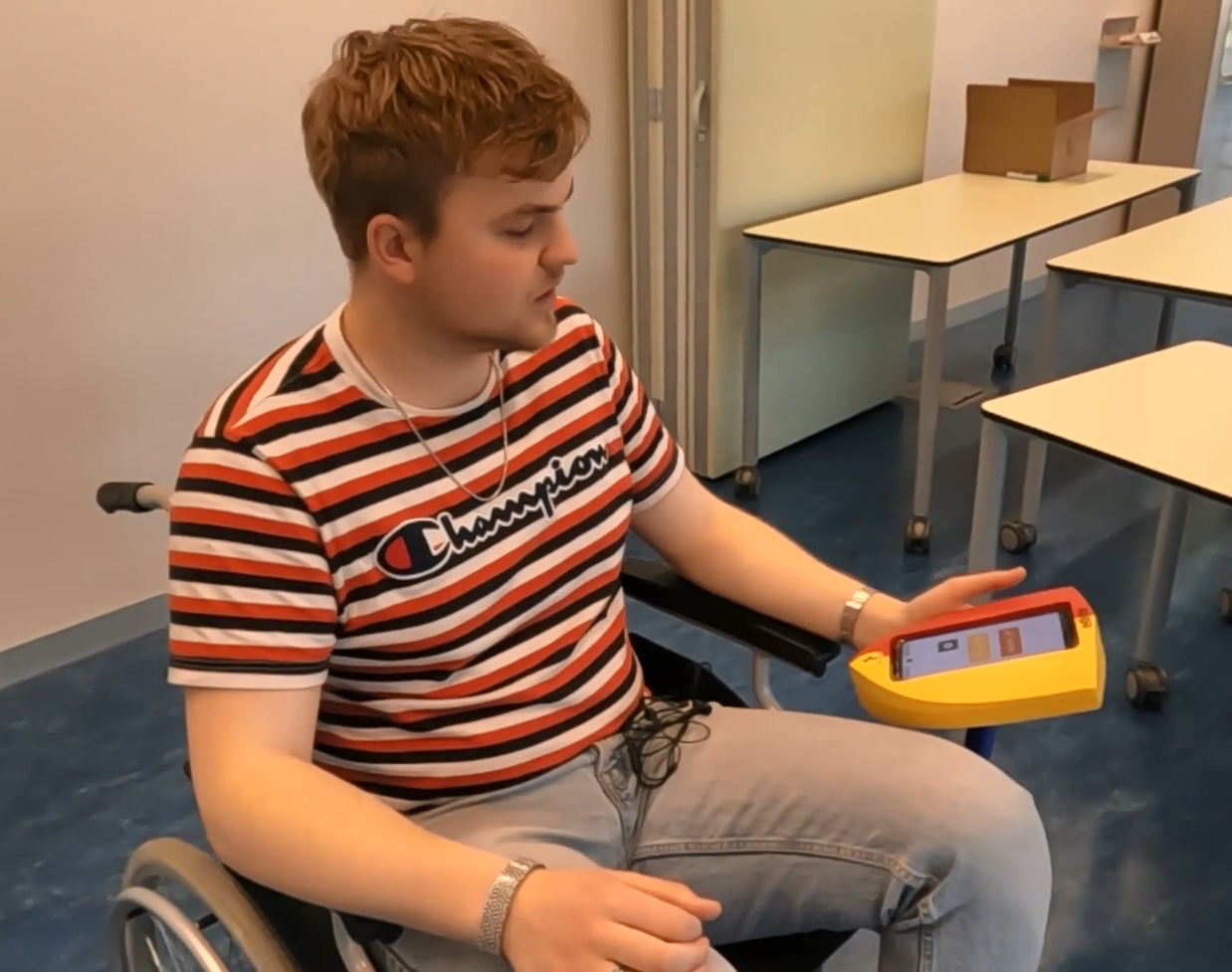
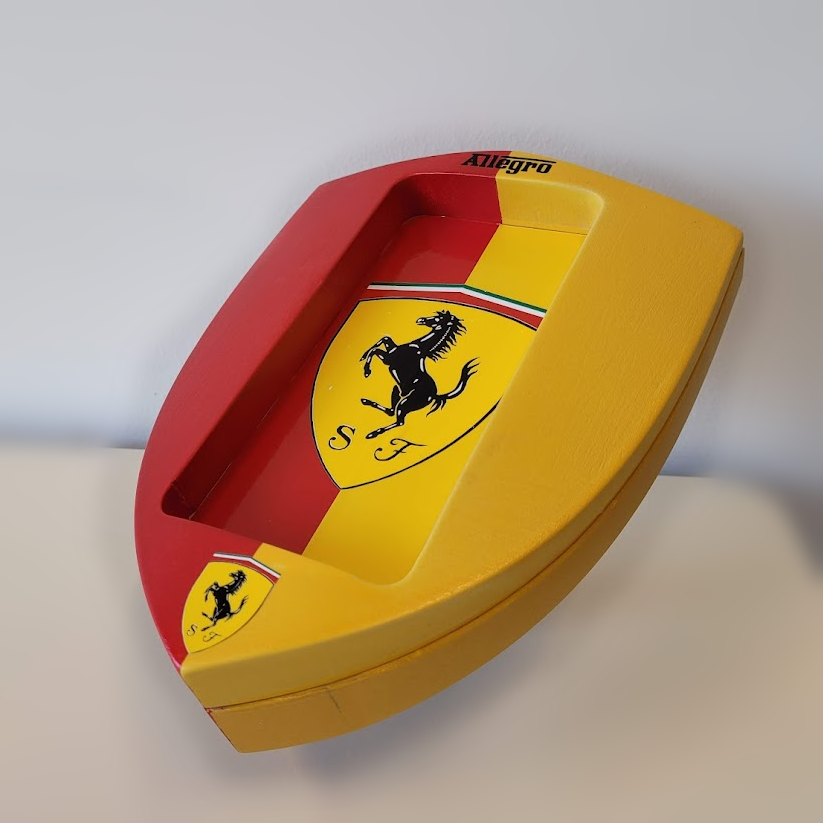

This product is a custom-made, electronic device that is meant to be used for listening to music and calling specific contacts in case of emergency. It can be clamped to a wheelchair which allows the user to operate the device hands-free.
This concept board shows the Allegro in its prototype format. The final design is an improved version of concept 2, which is a device that can attached to the user’s wheelchair. As explained in the image, the product can be used to listen to music. Next to that, the user can call a few emergency-contacts.
This top view of the render shows the final version of the product. It has a big on/off button so the user can easily hit it. In addition, the buttons are rather large and simply displayed. The large hole on the bottom of the product allows for audio input, in the participant’s case it is a headphone.

These side views show the other two places for inputs in the design. The left hole ensures the product can be charged, while the right one can be used for connecting an SD-card.


Final sketch

Interface
On the big touchscreen the user can interact with the interface. There are two application and settings. The two apps are the music player and the phonebook. The music player is the app were the player can play music, create playlist and search for song by artist and favorites. An interactive interface can be seen in the phone screen.
User interaction
The device is mounted on the wheelchair so the user has handfree access to the touchscreen and can interact with the interface.

Mechanism
The mechanism of the device is shown in these images. The pole can move and rotate, so it can be positioned in a more ergonomic way. With two simple screws, it can be attached to the wheelchair.



Design Details

The participant in this co-design strongly addressed their love for the brand Ferrari and its aesthetic. They like the style and colours, and during one of the co-design sessions, they chose these particular colours for the design of the product. The logo is implemented into the design twice: in the overall shape of the product and in the upper corner of the shape. Furthermore, the name is put onto the design.
Prototype

